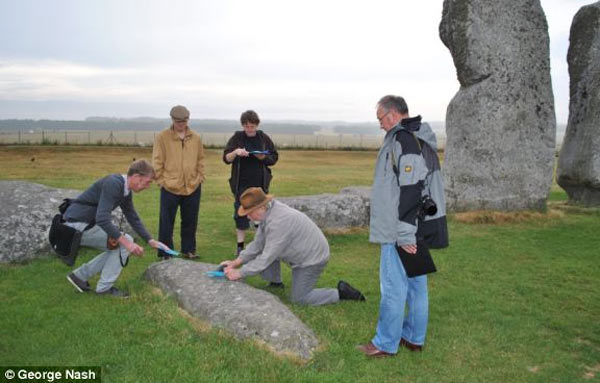Researchers reveal Stonehenge stones hold incredible musical properties
A team of researchers from London’s Royal College of Art (RCA) have discovered that the stones used to construct Stonehenge hold musical properties and when struck, sound like bells, drums and gongs. It is suggested that these properties could be the reason why the builders were willing to travel so far to source the stones from Wales and bring them to the site in Salisbury Plain, England.
In the new study, which was published today in the Journal of Time and Mind, experts conducted acoustic tests at the site for the first time by tapping the bluestones with small quartz hammerstones to test for sonic sounds. They found that the stones made metallic and wooden sounds in many different notes. Such sonic or musical rocks are referred to as 'ringing rocks' or 'lithophones'.
“Different sounds can be heard in different places on the same stones,” said the researchers.
The researchers used a special square of material to protect the surface of the rocks, but interestingly, several of the stones showed evidence of having already been struck.
The investigators believe that this ‘acoustic energy’ could have been the prime reason why these stones were transported nearly 200 miles from Preseli to Salisbury Plain, as archaeologists have not yet been able to explain why they were brought so far when there were plentiful local rocks from which Stonehenge could have been built. For some reason, the bluestones were considered special.
“It is not controversial to say that prehistoric people would have known of the stone's capabilities. We can see indentations on the rocks - the area is amazingly untouched,” said Jon Wozencroft, senior lecturer at the RCA.
The researchers had been concerned that the musical properties of the stones might have been damaged as some of them were set in concrete in the 1950s and the embedding of the stones damages reverberation.
“You don't get the acoustic bounce' but when he struck the stones gently in the experiment, they did resonate, although some of the sonic potential has been suffocated,” said Mr Wozencroft.
In Wales, where the stones are not embedded or glued in place, he said noises made by the stones when struck can be heard half a mile away. He theorised that stone age people might have used the rocks to communicate with each other over long distances as there are marks on the stones where they have been struck an incredibly long time ago.
One of the principal researchers, Paul Devereux is currently working on a book, Drums of Stone, which will tell the full story of musical rocks in ancient and traditional cultures.
To listen to clips of the stones being ‘played’ at Stonehenge, click here.


















Comments
Well, it's interesting - and acoustic phenomenon can be healing when used with some intuitive knowledge apparently. (replicating your oto-acoustic emanation tone can immediately drop your blood pressure up to 45 points...) but those closing sentences again illustrate the hubris of today.
They are going to write a book "all about" the stones - like they know diddly compared to what the actual USERS knew? C'mon. They didn't even know they made tones, now they do, and so they are going to expose ALL the ancient knowledge? How about- they're going to make educated guesses based upon THEIR knowledge base and experience - and everything beyond their personal awareness is just going to be totally unknown?
So they got these stones to Wiltshire from west wales to summon ET using sound, now? Why not just do it there? So much easier. Why build Stonehenge in Wiltshire with the bluestones unavailable there, at all.
All stones sound, everything does. You can go to any stone wall and play it. Try.
Let's shelve this idea shall we?
You might like to check out Mahayana Buddhist texts claiming that sound was used to move stones for building up onto mountainsides, and that several monasteries were created in this way
What if they in ancient history used sound for quarrying and shaping the stones. If they choose stone material with a very homogenious chrystal structure, there would have been resonance frequences to be found. Using these frequenses with appropriate energi input, would possible have given them an instrument for maisonry. At a certain limit , the stone would even break down due to mechanical stress.
Startling evidence that their is rock music older than the Rolling Stones!
This is the same as the pyramids, the stones make a perfect A in the central chamber. ....
Pages